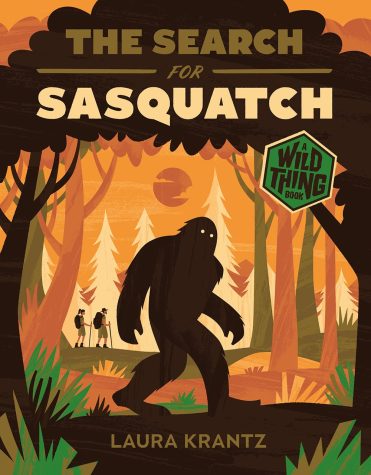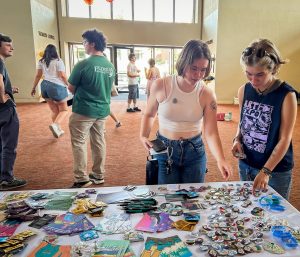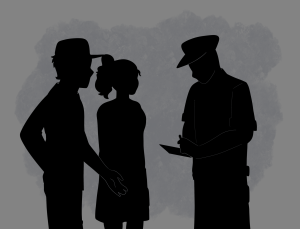Something’s afoot: Krantz ‘00 publishes book on Bigfoot
October 27, 2022
Set against the foot of the towering Blue Mountains and situated against a backdrop of rolling wheat fields, the scenic outdoors has become integral to Whitman’s image. Some believe that these benign ecosystems of the Pacific Northwest are hiding someone lurking below the surface — the legendary Bigfoot, also commonly referred to as Sasquatch.
For Whitties coming to college from the areas surrounding Washington, Bigfoot is no stranger. Depicted as a hulking, hairy and elusive hominid, the presence of Sasquatch has graced gift shops across the state. First-year Ella Shropshire explained that after reading the 1910 book “Fearsome Creatures of the Lumberwoods,” she was enchanted by the cryptids depicted in American folklore.
Senior Clover Beaty explained that growing up in a forest famous for its Bigfoot sightings meant that Sasquatch was ever-present during her childhood. With the help of shows on “National Geographic,” “Animal Planet” and “Discovery Channel,” she began to shape her own understanding of the mythos surrounding Sasquatch through the media she consumed.
“Seeing [cryptids] in a more scientific light means being able to understand that everything still has functions, anatomy and lifelike qualities. Everything that might be legendary should also be treated as life,” Beaty said.

Shropshire agreed with this perspective, explaining that she didn’t have a definitive answer as to whether Bigfoot was really out in the world and instead found joy in consuming the media that arises from cultural understandings of cryptids.
“Bigfoot is a cultural icon, and people love Bigfoot. I don’t think it matters whether or not he’s real [because] he’s important to a lot of people,” Shropshire said.
Laura Krantz’s newly published book, “The Search for Sasquatch,” recognizes the pull that naturally comes from mystery that draws people like Beatty and Shropshire into media and discussion surrounding cryptids.
After releasing the first season of her podcast, “Wild Thing,” centering on Bigfoot, parents and educators were expressing their desire for a similar piece of media that their kids could enjoy. Krantz was up for the challenge and saw inherent educational value in subjects that many adults treat as mere fantasy.
“[The book] is a great opportunity for them to ask questions about something that is a big mystery in American folklore and use science to try and answer those questions,” Krantz said. “Part of my goal was to introduce some critical thinking, critical reasoning and scientific literacy, while at the same time letting them have a bit of wonder about the world.”
For Shropshire, the sense of wonder that legends like Bigfoot inspires is something worth carrying into adulthood.
“I think experiencing childlike wonder is something you should do in your life. Bigfoot and having fun with these myths that exist around you is a way to interact with your inner child when you get excited about magical or mystical things… For me at least, it makes me experience life a little bit brighter,” Shropshire said.
Beaty explains that seeing Bigfoot through a scientific lens can act as a valuable lesson on how we interact with the ecosystem around us. She advocates for leaving Bigfoot at peace in his environment if his existence is proven and distancing woodland dwelling creatures from further human interference.
Regardless of your age or whether you believe, there are valuable lessons that popular legends like Bigfoot can teach us. By blending disciplines to create work that honors Bigfoot in a new way, Krantz has exemplified the ways that interdisciplinary understanding crafts valuable new perspectives.
“The book and the podcast from which it came from are very much the product of a liberal arts experience. It’s science, it’s philosophy, it’s psychology, it’s history, it’s biology…,” Krantz said. “It is this general feeling that none of these subjects work in isolation, and they all are pulling from different aspects of the human experience.”
By letting a little bit more whimsy into our lives and understanding legends as existing in dialogue with the world around us, readers are able to experience joy through the scientific pursuit of Bigfoot.






